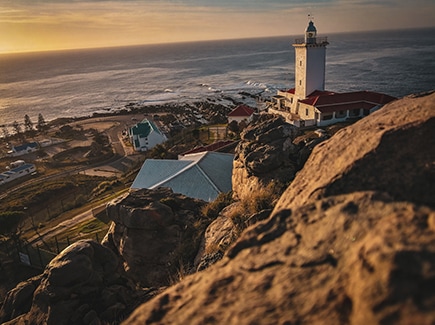Published in the Sunday Indian Express Magazine - Eye on 06 October, 2024
Discover the incredible journey of cinnamon, black pepper, saffron, andother spices that transformed global cuisine and influenced the course of history
Today, I want to talk about the Spices that Changed the World. Wars were fought over them, empires rose and fell in their pursuit, and they were once worth more than their weight in gold. Spices like cinnamon, black pepper, saffron, and nutmeg were among the most coveted treasures of the ancient world so valuable, in fact, that they shaped the course of global exploration and trade. But their value was not only measured in gold coins and political power; these humble ingredients profoundly impacted the world’s cuisines, sparking a culinary revolution that continues to this day.
The ancient spice trade routes like the famed ‘Silk Road’ and the ‘Maritime Spice Route’ linked distant civilisations from India to the Middle East, Southeast Asia, and Europe, moving not only spices but also ideas, cultures, and tastes. As merchants and explorers transported these exotic flavours across continents, they transformed the kitchens of the world. Today, dishes we might consider local or traditional often carry the subtle or bold influence of spices that travelled thousands of miles to reach our plates.
Cinnamon: The Sweet Spice that Triggered Exploration
Originating in Sri Lanka and Southeast Asia, cinnamon was once considered so precious that it sparked maritime explorations and shaped the early European age of discovery. The spice was a key commodity during the early spice trade, often more valuable than gold due to its scarcity and high demand in Europe, where it was used to flavour everything, from wines to medicines. For centuries, Arab traders kept its true source a closely guarded secret, leading Europeans to believe it grew in the mythical ‘Land of Cinnamomum’.
The Portuguese were the first to discover its source in the 16th century, leading to their colonisation of Sri Lanka, and later, the Dutch and British fought for control over this island to dominate the cinnamon trade. This delicate spice was not only a driver of global exploration but also a catalyst for colonialism, influencing world history in unexpected ways.
Today, cinnamon continues to captivate taste buds across the globe. Whether it’s in European desserts like cinnamon rolls or Moroccan savoury dishes such as tagines, the spice’s sweet warmth is woven into a multitude of cuisines.
Black Pepper: The King of Spices
Black pepper, often referred to as the ‘King of Spices’, once held a position so powerful that it was used as currency in ancient Rome. Its roots trace back to India’s Malabar Coast, where it has been cultivated for thousands of years. During the Middle Ages, black pepper was one of the most valuable commodities in Europe, highly prized for its ability to preserve food and enhance flavour. So essential was black pepper that it was often referred to as ‘Black Gold’, and its trade contributed to the wealth and power of several empires, from the Romans to the Venetians.
The spice trade in black pepper laid the groundwork for European exploration. Portuguese explorer Vasco da Gama famously navigated a sea route to India in 1498, establishing direct trade links that would forever change the course of history. Portuguese, Dutch, and British traders battled for control over the lucrative pepper trade, with colonial powers establishing footholds in India specifically to control its production and export.
In modern kitchens, black pepper remains ubiquitous, seasoning everything from Italian classics like cacio e pepe to Indian dishes such as pepper rasam.
Saffron: The Golden Spice with Mystical Origins
Saffron, the world’s most expensive spice, has been treasured for its striking golden hue, distinctive flavour, and medicinal properties for over 3,000 years. Originating from the Mediterranean region and Iran, saffron was once believed to hold mystical and healing powers. In ancient times, it was used in everything from perfumes to medical treatments, and it became a symbol of wealth and luxury across ancient civilisations, from Greece to Persia and beyond.
Obtaining saffron is a labour-intensive process, which partly explains its high cost. It is derived from the delicate stigmas of the crocus flower, with thousands of flowers needed to produce just a small amount of the spice. Throughout history, saffron’s allure made it a prized possession for traders along the ancient spice routes, with merchants carrying it from the Middle East to markets across Europe and Asia.
Today, saffron has found its way into signature dishes like Spanish paella, Persian saffron rice, and biryani. Its luxurious presence in these dishes carries with it a sense of history, recalling the days when saffron was worth its weight in gold and symbolised far more than just flavour. It was the spice of royalty.
Nutmeg and Cloves: The Spices That Changed Empires
Both, nutmeg and cloves are spices that hail from the tiny Spice Islands of Indonesia, a small archipelago that, for centuries, was the only place in the world where these coveted spices grew. Their unique flavours made them highly sought after in Europe, where they were believed to possess medicinal properties and were used to season everything from meat to wine.
During the 16th and 17th centuries, the quest to control the nutmeg and clove trade led to intense rivalries between European powers. The Portuguese were the first to reach the Spice Islands, but they were soon replaced by the Dutch, who established the Dutch East India Company. In their bid to monopolise the spice trade, the Dutch waged bloody wars, displacing native populations and even destroying nutmeg trees on competing islands to maintain their dominance. The so-called ‘Spice Wars’ altered the course of colonisation in Southeast Asia and left a complicated legacy of exploitation and power struggles.
Despite this dark history, nutmeg and cloves remain cherished spices today, gracing dishes from Indonesian rendang to Dutch speculaas cookies. Their warm, spicy notes continue to delight palates across the globe, reminding us of their transformative journey from the tropical islands of Indonesia to tables worldwide.
Ginger: The Spice That Travelled East and West
Ginger, known for its sharp and zesty flavour, has been a staple in both Eastern and Western cuisines for over 5,000 years. Originating in Southeast Asia, ginger was one of the earliest spices to be traded along ancient routes, finding its way to the Middle East and eventually to Europe. In ancient China and India, ginger was highly prized for its medicinal properties, believed to aid digestion and treat ailments from colds to arthritis. As trade routes expanded, ginger quickly became a popular commodity, coveted not only for its culinary uses but also for its reputed health benefits.
During the Roman Empire, ginger was introduced to Europe, where it became a prized spice for its ability to preserve food and enhance flavour in dishes ranging from meats to desserts. It wasn’t long before ginger was a staple in medieval European kitchens, finding its way into spice cakes, gingerbread, and even ales.
The Lasting Legacy of the Spice Trade
The ancient spice trade routes were far more than just channels of commerce they were pathways of cultural exchange and culinary transformation. The spices that once travelled thousands of kilometres across treacherous seas and desert landscapes not only shaped the palates of civilisations but also connected distant cultures in ways that still resonate today.
So the next time you reach for that dash of cinnamon or pinch of turmeric, take a moment to reflect on the incredible journey these spices took to reach your kitchen. After all, behind every spice lies a world of history, adventure, and flavour. Until next time, keep Celebrating Life and ‘Spicing’ it up!

























































Post your Comment
Please let us know your thoughts on this story by leaving a comment.